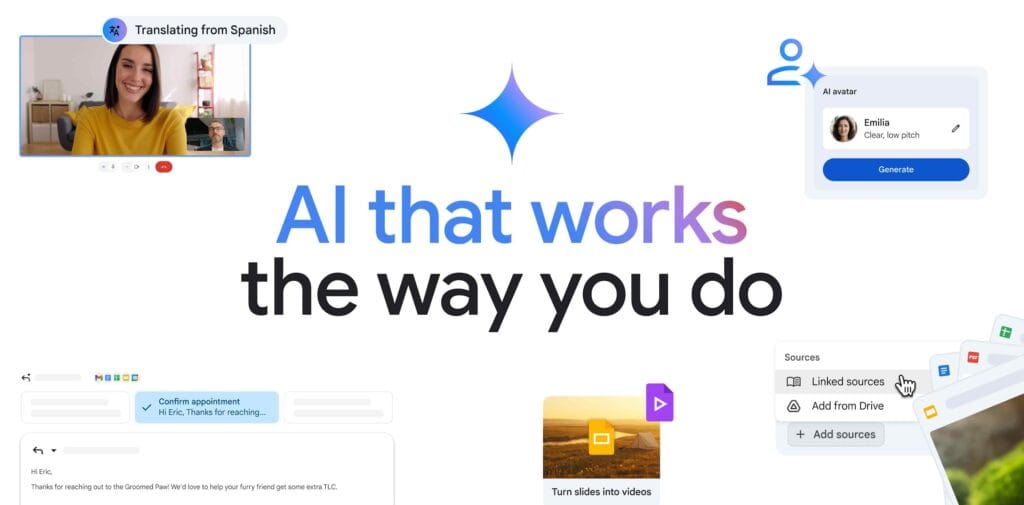Sure! Here’s the translation into American English:
—
The new AI-powered feature allows participants to listen in their own language to what their conversation partner is saying, nearly instantly and while preserving their original tone.
Google has begun rolling out one of its most promising innovations for the future of digital communication: real-time voice translation in Google Meet. This tool, initially available in beta for users of the Google AI Pro and Ultra plans, transforms a video call between people speaking different languages into a seamless conversation, without the need for interpreters or subtitles.
The system automatically and almost instantly translates what one person says in their language to the listener’s language, all while maintaining the timbre, tone, and expressiveness of the original voice. This is key: it’s not just a synthetic voice, but a natural and humanized communication experience, as understood by Gemini’s generative AI.
Beyond Subtitles: An Immersive Translation Experience
While other platforms have limited themselves to offering translated subtitles or transcripts, Google Meet’s solution goes a step further: it translates audio in real time, preserving voice and style. This allows for more direct, emotional, and comfortable interaction, particularly in contexts where tone of voice is as important as words.
According to Google, this feature will be useful in business settings—such as meetings between international teams or multilingual customer service—as well as in everyday use among family or friends who do not share a language.
Currently, Only English and Spanish
The system is now available for English and Spanish, although Google has confirmed that more languages will be added in the coming weeks. Efforts are also underway to adapt this technology for the corporate environment of Google Workspace, where this feature is expected to integrate with broader productivity and collaboration tools.
Its use will be automatic within Meet, with no additional installations required, although it does require an advanced subscription to access the functionality during this initial phase.
Real Applications, Immediate Impact
The practical utility of voice translation in Meet is evident. From virtual training among teams in different countries to calls between customers and sales representatives without a common language, or even video calls between generations of the same family dispersed around the world, this tool eliminates one of modern communication’s most persistent barriers: language.
And it does so without sacrificing the naturalness of conversation, something that had been beyond the reach of traditional automated solutions until now.
Gemini: The Engine Behind It All
The feature relies on Gemini, the AI system that Google is integrating throughout its productivity ecosystem. In this case, Gemini not only translates but also understands context, preserves the intent of the message, and adapts to the rhythm of human speech. The goal is to make the result as close as possible to a face-to-face conversation between speakers of the same language.
Toward a More Connected World
With this new feature, Google not only expands the capabilities of Meet but also positions itself at the forefront of practical AI integration in global communication. Real-time voice translation marks a turning point: one where language differences cease to be a barrier and become just an option in the settings menu.
At a time when hybrid work, remote education, and transnational personal relationships are more present than ever, Google Meet redefines what it means to “speak the same language”. And it does this, as always, with AI in the background and a clear ambition: to bring people closer together, no matter what language they speak.
Source: Artificial Intelligence News
—


